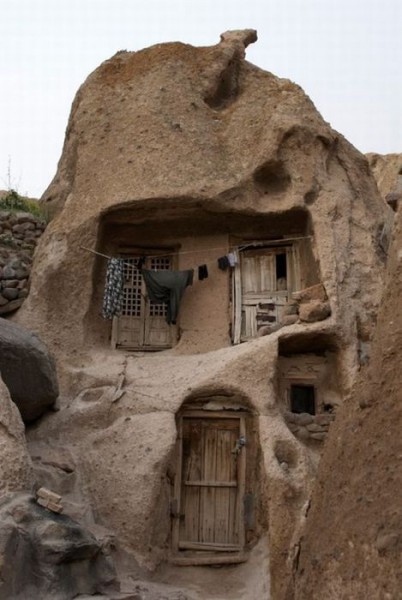

Homes like this just get me thinking. Not only do they make me feel fortunate but they also get me to think of how else us, as humans, could live. And how we can use our current environment and convert it to shelter with minimum effect on earth. These sort of unique structures just get me thinking. And I’m sure they do the same for you. It’s eye opening and it’s interesting to learn the history behind things like this. More photos on this cave village are available here along with the history behind it.
Here’s what the Heritage Institute has to say about it:
What makes Kandovan village so unique is that many of its homes have been made in caves located in cone-shaped, naturally formed compressed volcanic ash formations that make the landscape look like a gigantic termite colony. This method of dwelling makes the residents modern-age cave dwellers or troglodytes. (Troglodyte means cave dweller: somebody living in a cave, especially somebody who belonged to a prehistoric cave-dwelling community. Troglodyte also means somebody living in seclusion.)
It is our understanding that the unusual cone formations were formed from volcanic ash and debris spewed during an eruption of Mount Sahand being hardened and shaped by the elements over thousands of years. The formation of volcanic ash cones is local to Kandovan. Elsewhere, the ash blanketed the land. The existence of a high volume of ash and pumice far from Sahand’s crater indicates that Mount Sahand erupted with a gigantic explosion in the distant past.
If you thought this post was interesting you’ll love our free daily tiny house newsletter!